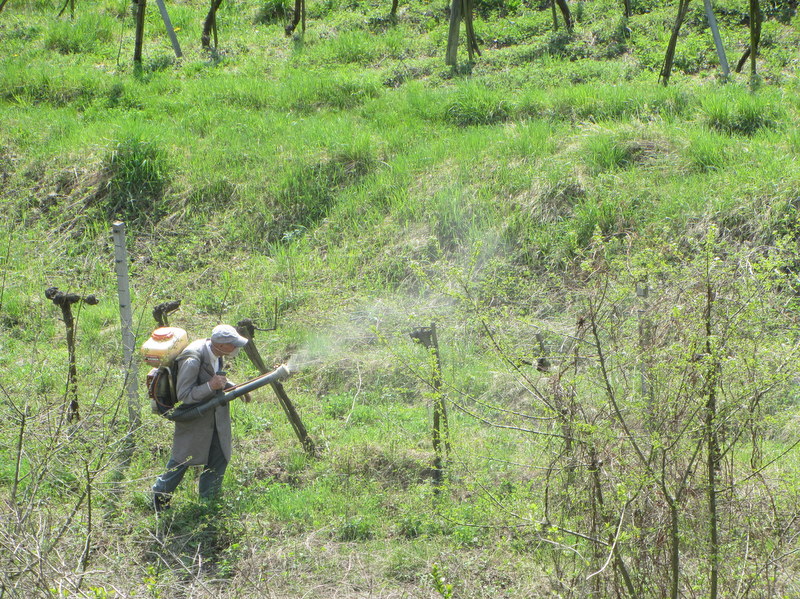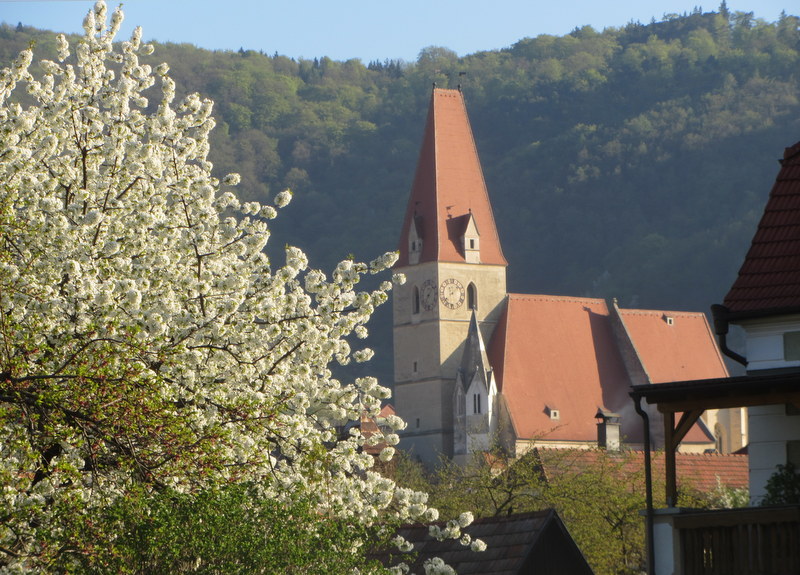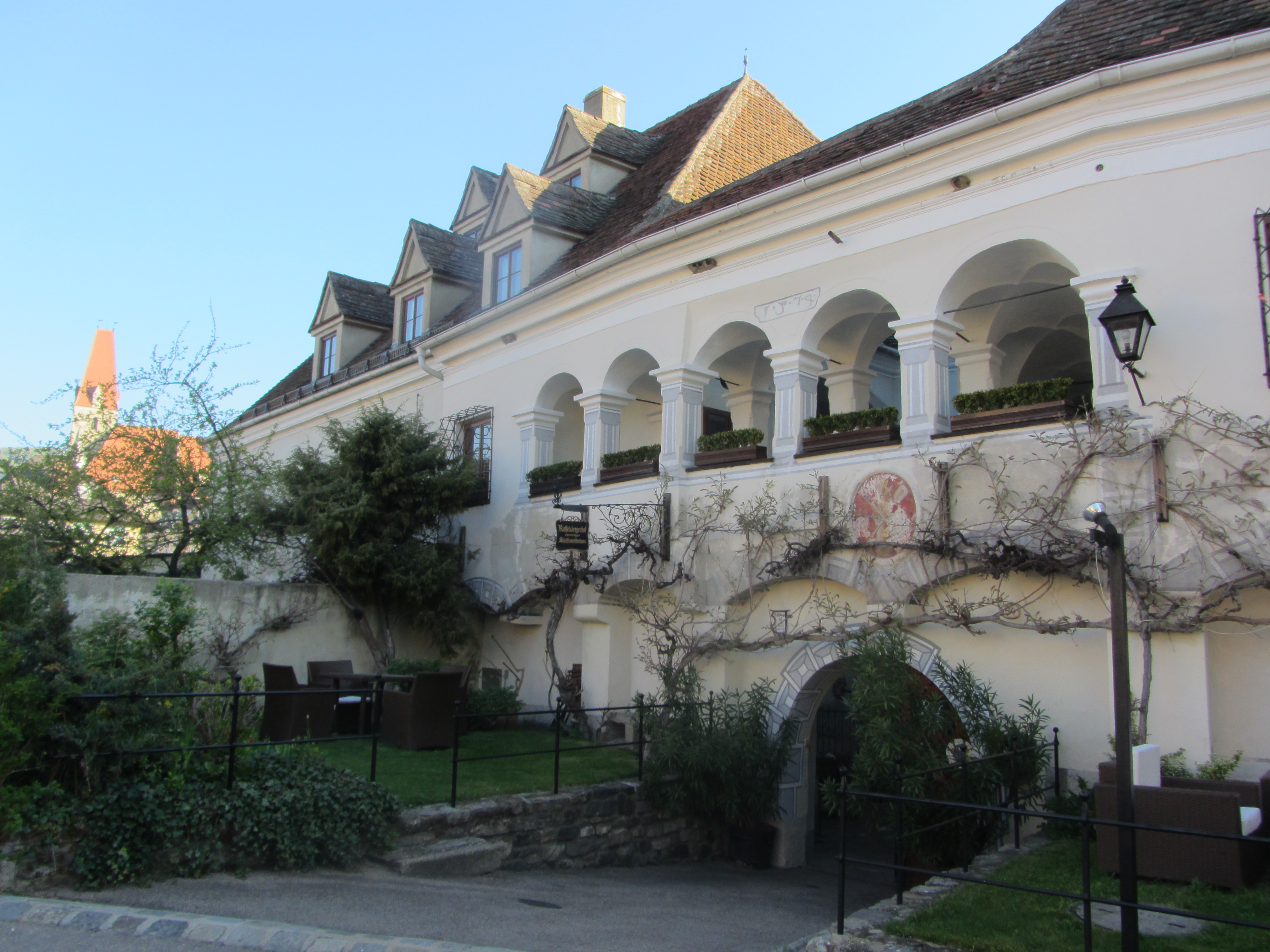When I left Dürnstein, the sound of church bells filled the valley. Each church bell in
the villages sounds differently, yet they are tuned to each other. From the bakery, the
smell of fresh bread surrounded me. This bread is famous in the valley and is called
Wachauer Laberl.
On the stone walls of the hundreds of years old terraces, plants grow under difficult
conditions. These plants are survivors. I had forgotten how much I loved this
vegetation. The stone walls are home for many animals. One of them is the green
lizard. In German, it is called a Smaragdeidechse. The best wine of the Wachau is
named after it.

Green lizard (Emerald lizard is the German translation)
Because of the difficult access to the terraces and the tiny fields, all of the work in the
vineyards has to be done by hand. As a child, I worked in the vineyards too. Every
season, work has to be done. Even in winter, the farmer has little rest. At this time,
the vines have to be cut.
In the evening, I arrived at the city of Weißenkirchen.

Succulent with mullein

Field worker with handspray

Field worker with handspray

Gothic church of Weißenkirchen
In Weißenkirchen, I visited the Raffelsbergerhof, once the home of a Schiffsmeister
(shipowner). A Schiffsmeister had the right to own ships on the Danube. My
ancestors were also Schiffsmeisters. Before the steam motor was invented, these
ships were barges which had to be pulled upstream by horses. Until the 19th century,
there existed a law that those who wanted to work on a barge were not allowed to
know how to swim. In case of a shipwreck, everybody would try to save the barge at
all cost. Barges were more worth than human life. In the 18th century, this lead to a
disaster for my family and the village I am from. Two of my male ancestors and half
of the men of the village drowned in the Danube.

Raffelsbergerhof, Renaissancebuilding, 16th century
– Text and pictures by Garyo
